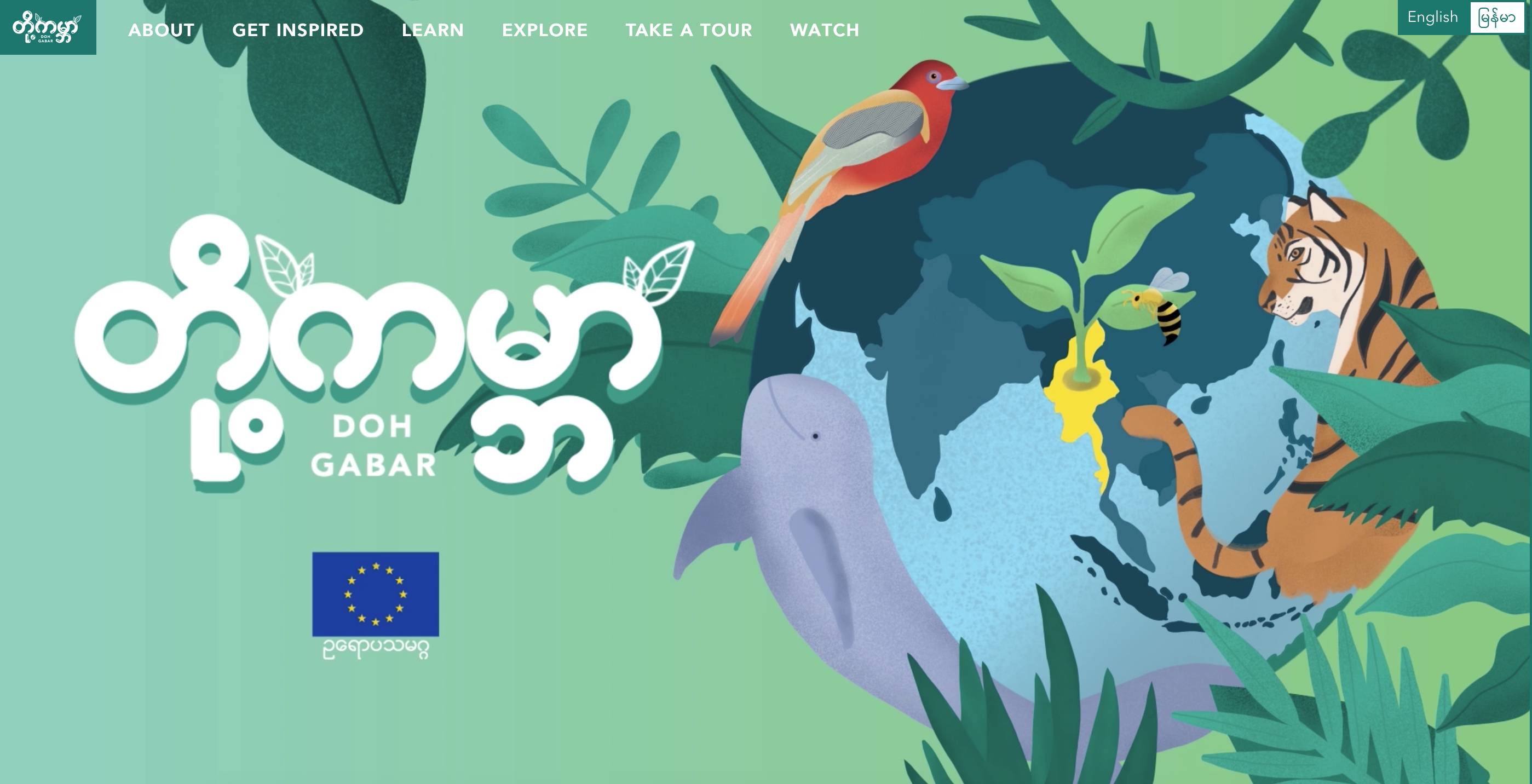
Myanmar, one of the most biodiverse countries in the world, is facing serious threats from deforestation, pollution, wildlife crime, and climate change. To raise awareness of these pressing environmental issues and the importance of protecting Myanmar’s biodiversity, the European Union is launching “Doh Gabar” (Our Earth), a six-week multimedia digital exhibition featuring the creative works of Myanmar visual artists, celebrities, and eco-champions.
Originally conceptualised with an art exhibition, film screenings and series of other events, Doh Gabar has evolved into an all-digital format due to the COVID-19 pandemic. Multimedia content including visual arts, installations, educational videos, & infographics, local and international documentaries, and an interactive map will be published online, focusing on four themes: biodiversity loss, deforestation, climate change and pollution. Webinars featuring experts from various sustainability programmes, which are funded by the EU and other partners in Myanmar, will also be livestreamed on Facebook.
Doh Gabar will kick off on 5 June, on World Environment Day, with the launch of the digital campaign through social media. In keeping to this year’s World Environment Day global theme on biodiversity, Doh Gabar will first depict Myanmar’s rich biodiversity; why it matters, and what every person and institution can do to preserve, protect and maintain the balance in nature.
The world will overcome coronavirus. The more united we are, the faster we will recover. The same is true for the ongoing pandemic of environmental destruction. We need to act jointly and quickly, because, like a virus, climate change affects our ability to breathe. Forests and oceans are the lungs of our planet. Our objective should not be getting back to normal. ‘Normal’ is unsustainable. We have no choice – the recovery must be green, and it must be green for everyone,” said EU Ambassador Kristian Schmidt.
Renowned visual artists Htein Lin, Kaung Su and Zun May Oo, documentary photographer Hkun Li are among those contributing artistic works and environmental perspectives to Doh Gabar. Live installation, painting, poetry and artists’ interviews will be filmed and available online.
The exhibition can be accessed through the website dohgabar.org which will go live on 15 June; the European Union in Myanmar Facebook page, and the social media pages of partners such as SMART Textile and Garments, Prevent Plastics, Thant Myanmar, Tha Bar Wa, Myanmar Climate Change Alliance and other local and international organisations in environmental conservation.
Myanmar actor and Doh Gabar Ambassador Daung said, “We only have one planet and it’s our responsibility to take care of it. Our very survival depends on how well we take care of nature today.”
Daung and fellow celebrities Daw Swe Zin Htike (Auntie Grace) and Ma Aye Thaung are starring in a series of environmental education videos focusing on climate change, the importance of forests, and reducing single use plastic, respectively.
Between 2010 and 2015, Myanmar had the third highest rate of deforestation in the world after Brazil and Indonesia. “Forests are the ‘lungs of mother earth’, absorbing carbon dioxide and producing oxygen. Forests are essential to human life and the natural habitat of wildlife so we should do everything we can to preserve them,” said award-winning actress and Doh Gabar Ambassador Daw Swe Zin Htike.
Quotes from artists:
“With my charcoal trees, I want to take the audience back to the previous life of the mangrove forest. Will we be able to recover from those foolish mistakes? Can we resurrect our deltaic mangroves?” -- Htein Lin
“I started documenting the banana plantation related issue three years ago. When banana plantations have been shut down in Laos by the Government because of the overuse of pesticides and chemicals, Chinese investors came to Kachin state. The excessive use of pesticides and chemicals not only harms the health of the workers, but also damages the land and the environment. During harvesting, they use a huge amount of plastic. Then, all the rejected bananas and pesticide bags are abandoned on the plantations.” -- Hkun Li
“As an artist I have been working on environmental issues for over 20 years. Once the slave of nature, we are now shaping and destroying our home planet to satisfy our needs and desire of consumption. I think that we have entered the period of consequences and that we cannot continue this infinite destruction and infinite growth on our finite planet.” -- Kaung Su
"While this covid-19 is a serious threat to humanity, I think the ongoing environmental threat with climate change, loss of biodiversity and much more is something of a whole different scale. And we are seeing that those are going to get more worst in the next days. I wonder who is the culprit and who is the victim for this crisis. May be by ourselves. Does it show that we are able to wake up altogether? Or does it simply show that humans act only if there is a fatal risk for themselves? This is what I am questioning in my work." -- Zun May oo
Original news article at Delegation of the European Union to Myanmar
Media Contact
Kyu Kyu Thin
09-425 29 4606
RICE Communications


